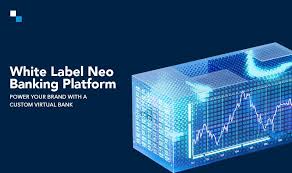
It has become important for organisations to ensure they are adhering to best practices for information security. The ISO 27001 Certification and SOC 2 are two such vital benchmarks that reflect a company’s commitment to safeguarding its data and that of its customers. Let’s delve into the auditing processes for both standards, and also touch upon the comparison: ISO 27001 vs SOC 2.
What is ISO 27001?
iso 27001 assessment is an internationally recognized standard that outlines the best practices for an information security management system (ISMS). To achieve an ISO 27001 Certification, an organization needs to prove that they’ve systematically managed their information security risks, including potential vulnerabilities.
ISO 27001 Auditing Process
- Gap Analysis: This is the initial phase where the existing ISMS is evaluated against the ISO 27001 requirements. This helps in identifying areas that require further attention.
- ISMS Implementation: Based on the findings from the gap analysis, the organization will then establish or refine its ISMS. This involves establishing the necessary policies, procedures, and controls.
- Internal Audit: Once the ISMS is in place, an internal audit is carried out to check its effectiveness and identify areas of improvement.
- Management Review: The top management reviews the outcomes of the internal audit, ensuring commitment and allocating resources for further enhancements if necessary.
- Certification Audit: This is the final step. External auditors will conduct a two-stage audit:
- Stage 1: Preliminary audit to assess the readiness of the organization.
- Stage 2: Detailed audit to evaluate the effectiveness of the ISMS. Successful completion of this stage results in the ISO 27001 Certification.
What is SOC 2?
Service Organization Control 2 (SOC 2) is an auditing procedure that ensures service providers securely manage data to protect the interests of their clients and the privacy of clients’ information. It is based on five trust service criteria: Security, Availability, Processing Integrity, Confidentiality, and Privacy.
SOC 2 Auditing Process
- Readiness Assessment: Similar to the gap analysis in ISO 27001, this assessment gauges where the company currently stands in relation to the SOC 2 requirements.
- Remediation: Post the assessment, the company will start implementing the recommendations, tweaking its processes and controls to align with the SOC 2 criteria.
- Type I Audit: This is a snapshot of the organization’s controls at a specific point in time. An auditor will evaluate and report on the design and implementation of controls.
- Type II Audit: This audit is more comprehensive and assesses the effectiveness of the controls over a minimum period of six months. Companies that pass this audit demonstrate not only the existence but also the operational effectiveness of their controls.
ISO 27001 vs SOC 2
When we bring “ISO 27001 vs SOC 2” into the discussion, it’s essential to understand that while both standards aim to enhance an organization’s security posture, their focus, and application are different.
- Scope: ISO 27001 has a global recognition and applies to all types of organizations, irrespective of size or industry. In contrast, SOC 2 primarily targets service providers storing customer data in the cloud, making it more prevalent in the IT and hosting industries.
- Framework: ISO 27001 mandates companies to design and implement an ISMS tailored to their unique risks. On the other hand, SOC 2 is more prescriptive, requiring adherence to the five trust service criteria.
- Certification & Reporting: Successful ISO 27001 audits result in certification, demonstrating compliance for three years (with annual surveillance audits). In contrast, SOC 2 provides organizations with a report. A Type II report, for instance, confirms the effectiveness of controls over a specific period.
Conclusion
Both ISO 27001 and SOC 2 are instrumental in building and showcasing a robust security framework. ISO 27001 Certification proves that an organization is committed to international best practices, while SOC 2 assures stakeholders of the security of their data with specific service providers.
By understanding the nuances of each, businesses can better align their security efforts with their industry requirements, business goals, and stakeholder expectations. For more information, check this page out: The Knowledge Academy.
Write and Win: Participate in Creative writing Contest & International Essay Contest and win fabulous prizes.


